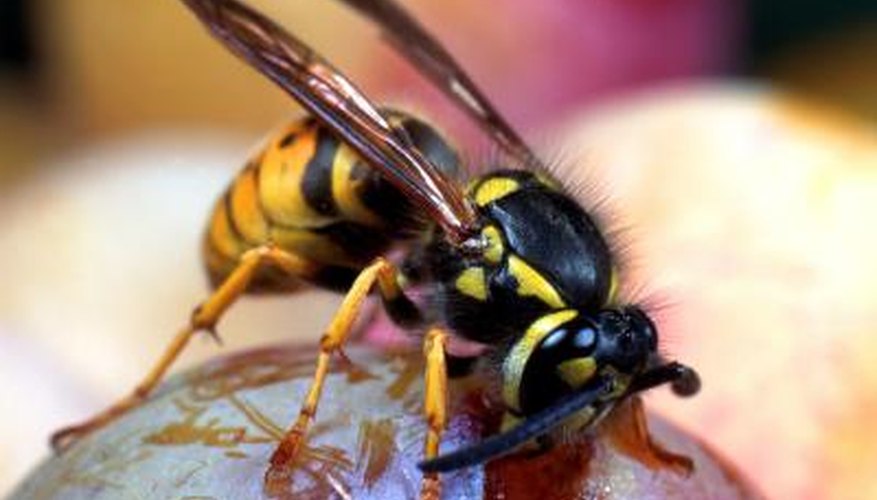Unless a spotlight nearby draws them out, most stinging insects do not fly at night and instead stay inside their nests. However, hornets are a type of wasp, and one of those hornets -- the European hornet -- will fly and even hunt at night.
Day dwellers
Wasps use the sun to orient themselves; they can't see without light. Flying at night amounts to flying blindly, which even an insect would recognise as dangerous and counterproductive, but a bright light might be enough to draw it out again. The wasp's aversion to flying at night is so universal, however, that many pest control companies treat wasp problems after dark because they know where to find the stinging insects, which are generally sluggish at this time and confined to their nests.
Night flyer
The European hornet, a large wasp at 3.8 cm (1 1/2 inches) long, flies at night and actually hunts prey in the dark. It eats large insects such as grasshoppers, bees, flies and yellow jackets, as well as tree sap and fruit. Although more than willing to fly in the dark, the European hornet is attracted to lights, such as those on porches, campsites and other populated places.
Habitat
A social insect, the European hornet lives with others of its kind in a paper nest. To build onto the nest, the hornets chew bits of decayed wood, mix it with saliva and spread the substance over the nest. It dries into a tough material resembling paper. Usually they choose tree hollows for their homes, but they have been known to build nests in barns, sheds, attics and empty spaces inside walls. As many as 400 individual hornets might live in the same nest.
- A social insect, the European hornet lives with others of its kind in a paper nest.
- To build onto the nest, the hornets chew bits of decayed wood, mix it with saliva and spread the substance over the nest.
Dangers
The European hornet is in the same family -- Vespidae -- as the yellow jacket. Although not as aggressive as a yellow jacket, the European hornet will attack any threat to its nest. Wasps and hornets have smooth stingers that can sting over and over again, and venom from these stings can cause serious allergic reactions in some people. Aside from stinging dangers, European hornets also damage trees and shrubs when they strip bark away to get to the edible sap beneath it and remove wood to build their nests. If extermination is deemed necessary, the European hornet is harder to isolate than other stinging insects. With 400 hornets in one nest willing to fly into the night and repeatedly sting any threat to the colony, a wise pest control company will set up a flashlight off to the side as decoy and wear a full suit of protective gear while exterminating the nest.
- The European hornet is in the same family -- Vespidae -- as the yellow jacket.
- Aside from stinging dangers, European hornets also damage trees and shrubs when they strip bark away to get to the edible sap beneath it and remove wood to build their nests.
